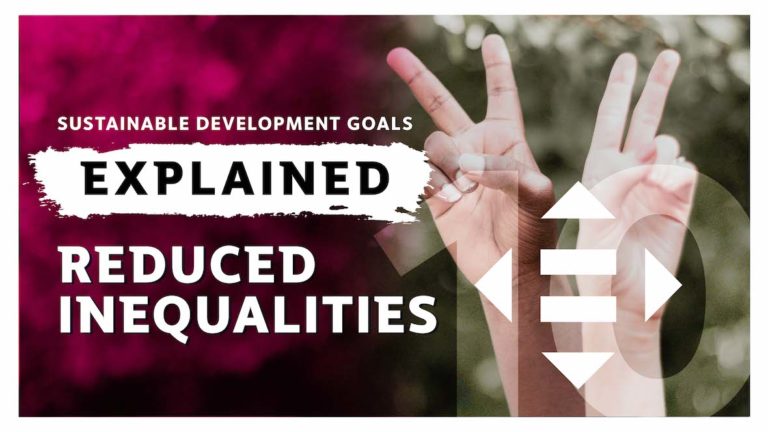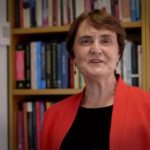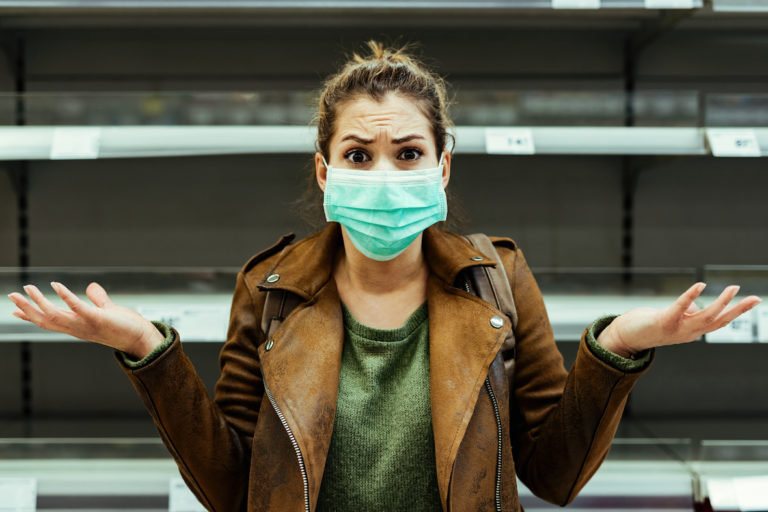Professor Carolyn Evans, Vice Chancellor and President, Griffith University
Welcome, Paul and Cheryl. Well, do you want to start off by telling us what’s on stage live in a little bit?
Professor Paul Burton, Director of Cities Research Institute
Well, so it’s about making cities inclusive, safe, resilient and sustainable. So it’s pretty wide ranging and pretty ambitious, especially given that most of the world’s population now lives in cities or other settlements. So we’re living in places that the SDG 11 and its components apply to. So, yes, it’s pretty broad ranging I’m a town planner by background, and in a sense, none of this is new to us. We’ve been pursuing – we didn’t call them sustainable development goals or Millennium Goals – but we’ve been pursuing that kind of agenda for maybe 150 years, not necessarily with great success, but you know, where we’re on that journey and this gives us an extra fillip, a bit of a boost, which is welcome.
Professor Carolyn Evans
And Cheryl, we say cities, we could be talking modern megacities with millions, tens of millions of people. We could be talking about areas with large slum populations, cities that have existed for hundreds of years. So really wide variety. So how do we get our head around a universal goal that applies to such diverse environments?
Professor Cheryl Desha, School of Engineering and the Built Environment
It’s a toughie. And we’re all on the same planet very small planet hanging in a really quite a vast amount of nothingness. So when we look in from from space and see Planet Earth talking about cities gives us a frame of reference. So it’s a way of us being able to bring together ideas and apply them and the context of cities and could be any of those that you just talked about. The opportunity for resilience involves cities working together around the planet. There are about 195 countries around the world. I have to look that one up, 195 and orbit two actual active member states of the United Nations. So inside that organising, I’m an engineer. So inside that organisation, then we’ve got really amazing ways to make a difference in a logical planned organisation.
Professor Carolyn Evans
And if the world was a bit more organised and planned that, it would be great. As Paul says, we’ve been trying to plan or engineer to do this for a long time. But we’re not necessarily doing so well on things like green spaces, public transport or sensible transport or so forth. What do we need to be doing differently to get better results?
Professor Paul Burton
I mean, just following up what Cheryl was saying, I think the challenge with the goals is to downsize scale them to particular places because the principles are fine at a global scale. But when you downscale them and apply them in your setting, that’s when you have to recognise that it’ll be a bit different. So what we need, what’s appropriate and needed in Brisbane is not the same as Beirut or Da Nang or Mumbai.
So in terms of green space, I’d have to say that actually in where we are, the major cities, Brisbane, the gold coast, we don’t have a problem with green space. I mean, half of the footprint of the Gold Coast where I mainly work is not built upon and it probably won’t be. Brisbane is a very green city, so we’re actually quite good on that front. Could we make our green space better? Absolutely. Could we value it a bit more highly and a bit more systematically putting an economic value on it because we know that it green spaces in all their forms. They deliver what we call ecosystem services. So they clean the air, they cool the environment, they help us capture water. And when we put an economic value on it, then maybe we’re in a better position to stop it being converted unnecessarily into a built environment. On the transport front, again, we sometimes say, Oh, the congestion is really bad. I got stuck for 10 minutes on the M1. I mean, again, you try to get from one side of Jakarta to the other or commute from the suburbs to central Moscow and it’s a different order of congestion. So actually here in terms of public transport provision, again, it could be better. But, you know, we’ve got Cross River Rail on the books, we’ve got the Brisbane Metro on the Gold Coast, we’ve got the Gold Coast Light Rail. They’re the start of what will become really good systems. So we’re pretty well-endowed here. But that doesn’t mean that in other parts of the world, in other cities, they’ve got some serious challenges that we simply don’t we don’t have here. So we’re very fortunate.
Professor Cheryl Desha
It’s it’s a mindset thing too, isn’t it, Paul? I think as we deal with those localized place based solutions for green space, for example, or transit activated corridors, where you might have smaller nodes of development, where people can still get to what they need and be surrounded by green space, being able to do that actually shifts our mindset into much larger scale challenges around climate change adaptation in where cities are positioned, how they relate to the periphery, where it be the beach or the mountains or grasslands. When we do it at a local scale and get success from that, I think it really helps us as human beings know that we can make a difference at scale.
Professor Paul Burton
So, I mean, the other thing I’d just say is that you’re absolutely right about mindset. The biggest mindset, I think that we have to change and we are changing it slowly, but surely in Australia is our preoccupation with and commitment to owning and driving petrol fuel vehicles you know, I mean it’s a relatively recent phenomenon, but we’re absolutely wedded to it and it’s almost like, you know, our most significant human rights is the right to own a vehicle to drive on a congestion free road to park for nothing wherever we want to go. And that’s got to change. It’s funny because it’s utterly unsustainable.
Professor Cheryl Desha
We didn’t even have fridges until mid-last century and yet we think that it’s just something that easy now every day. And David Suzuki talks about us being in the most unbelievable bubble of abnormality this century. And if we look to the past, things like the boulevards in Europe provided amazing examples of where people could come and be together in environments that had a backdrop or a stage of nature and get their wellbeing needs met, and then apply that to the beautiful art and explosion of science and art in that era. Yeah, today we have our fridge and we have our car and I think this is the best there is,
Professor Carolyn Evans
Although there’s also some of these were places designed very much for middle and upper class to have their enjoyment. Well, they outsourced a lot of the misery, you know, into really parts of the cities or the countries that were well,
Professor Paul Burton
The French in particular. You know, they the rich said, we’re going to stay in the center and make it nice and we’re going to push the poor to the fringes, to the bone.
Professor Carolyn Evans
And that story didn’t end so well, but we still have that way into the three large areas around the planet.
Professor Cheryl Desha
That we have a billion people still living in abject poverty in slums. And they’re quite close, often adjacent to the really amazing cities that are espousing green space and and opportunities for doing well by doing good. So I think there’s in that organisation of things as an engineer, I think there’s opportunities, even in places that are very close together to learn from neighbours where the climate is the same. Geography is largely the same. It’s just that the human populations experience is really different.
Professor Carolyn Evans
And Cheryl, you do a lot of work on emergencies. And as Paul said, many of us live in cities now. And again, that’s a relatively recent phenomenon. And emergencies impact on cities a bit differently to why that might impact on other environments. We’ve all been living through that globally with COVID. What have we learned from COVID? How could we apply that to other situations and thinking about resilient cities in the future?
Professor Cheryl Desha
Really good question. And they when we’re dealing with disasters or emergencies and we have we had the Sendai Framework for disaster risk reduction, and that’s been really helpful internationally through the UN and other mechanisms to help us understand what we can do in an emergency and how we can recover.
We talk about preventing, preparing and then responding and recovering, and that’s a cycle that we’re in. The past is full of stories of acute times of that where we’ve been able to recover enough and feel good and then face the next disaster on coming. The difference with COVID is that we’ve had this chronic and global experience of the same disaster and that has resulted over the last couple of years in a very deep sense of fatigue among our decision makers, among our population, people dealing with isolation and confinement, and then dealing with a lot of bereavement and grief. That overlay on emergency management is quite new in its scale. And I think moving forward with the United Nations Sustainable Development Goals and 11 in particular requires us to deal with wellbeing and that context of resilience in recovering in the face of ongoing adversity. And that’s a really different situation. But we can get inspiration from nature. So my actually my research area of studies, biomimicry, so it’s innovation inspired by nature. You know, nature does that all the time. Nature is full of ongoing diversity every single day. And critters like the prairie dogs when, when they are faced, you know, every day that a challenge for them, they have a leader that stands on a little hill. And when they see indicators of disaster, they alert and the rest of the pack stops enjoying themselves and runs or does whatever they’re preprogramed to do to have that kind of either automatic, whether it be sensors or human based in terms of leadership, letting us know when we really do need to be worried and act and then allowing us to enjoy our lifestyles that we remember and we want to return to in a way that meets the planet’s needs. You know, greenhouse gas emissions, air travel are a little unsettling in terms of looking ahead. Can we do relaxation without traveling as much and have those prairie dog like instincts of group culture is, I think, a really key consideration in going forward with our SDGs.
Professor Carolyn Evans
It’s a great example. And and in that broader ecosystem, of course, one of the plays off in universities is a role for universities in cities and well, I hope there is at least say there is. But what is that role?
Professor Paul Burton
I mean, absolutely. I mean, I’m on on three counts. Firstly, in the the education and the training, professional development that we provide. I mean, certainly in our areas of, say, planning, architecture, civil engineering, construction management, things like that, that’s absolutely critical. Then in terms of the research that we do. And that research, of course, feeds into an informal aims on teaching, which is good, but also informs, we hope, policy and practice. But a third area which I think is sometimes a bit under-appreciated but I’ve always thought is absolutely critical is is for an engaged university, is to make our spaces. And we’ve got some fantastic spaces and and we invest big money creating fantastic spaces, that we can then bring people here to have informed and thoughtful conversations, perhaps in contrast to the kind of shouty conversations. Well, they’re not even conversations that the dialog that’s had on social media. We can bring people together to address those issues, to be confronted with alternatives, but in a respectful and a thoughtful and a kind of academic way and if if we are willing and able to do that and we’ve got the facilities to do that, then I think that’s a that’s a great supplement and a complement to our teaching and our research
Professor Cheryl Desha
That the opportunity there to people, I think, is to remember that universities are enabled by the public and the taxpayers money and in doing the university machinery of day to day for teaching and learning, we also have an opportunity to be a civic university in being there for decision makers and leaders. So, you know, being a place for a retreat and to be able to do that deep thinking, supported by the academics, providing the evidence base really critical. And then to be able to do scenarios and planning ahead in a place away from the office.So, you know, you’ve got your talent and your facilities working together for me in terms of emergency management, that actually lends itself also to disaster response Universities often have quite large campuses, sometimes there in the city and and out of the city, being able to go somewhere as a physical retreat to then be able to have mindful response that enables our decision makers.
Professor Paul Burton
I think it’s really critical role that universities can and we can model and demonstrate good practice. You know, in in what we build and how we run our buildings and manage our operations as well. So, you know, because otherwise if we’re bringing people in and saying, let’s have a conversation about living more sustainably, but it’s evident from our environment. Well, and that’s a problem. So we ask but but I think we’re good, you know, and our commitment to the SDGs as is, you know, an excellent demonstration of, you know, living what we’re practicing, what we’re preaching.
Professor Carolyn Evans
And so final question for each of you. If you could do one thing one thing differently that would make our cities better, what would your priority people?
Professor Paul Burton
Well, actually, I think it’s it it builds on what I’ve just said. It’s it’s actually about creating structures that allow a diverse range of people with different views and different priorities legitimately held to come together and have conversations about the futures that they want to see. And want to create and the futures that they’re worried about and want to avoid. Because when it comes to as a planner, too often it’s at the very end of the process. You get a notice that your neighbour is proposing to do something. You say, I don’t like the sound of that. I’m going to go and protest and complain in a sense, it’s too late. Then we should have had the conversations earlier when we were having a discussion about the south east Queensland Regional Plan.
It’s difficult to get people out of their out of their living rooms to talk about something like that. It’s easier to get them out when it’s, you know, I’ve got a proposal to put a car wreck as you yard on your next door neighbour’s lot. So bringing people together to provide a foundation to talk about our futures I think would. That’s the foundation that we need. Thank you.
Professor Carolyn Evans
Cheryl?
Professor Cheryl Desha
I’m going to be an engineer, Paul. I’m going to say as an engineer and as a human being, I think at the source of transformation for our cities is energy that the conversation around energy. When I talk to my kids about why we rely on a static power station hundreds of kilometers away to generate energy from coal, that’s really quite inefficient.
And then string it to the cities on these tiny poles with wires that are subject to flooding and fire problems. They look at me and say that that’s a really silly solution. Why don’t they do something else? So having distributed energy systems with microgrids peppered around the place that are all backing each other up in that looking after your neighbour. So let’s face that is run on renewables it has the smarts of our digital technology. Isn’t it a fabulous coincidence that as we deal with the impacts of our humanity over the last 200 years, with the impacts of climate change, we are also blessed with the innovation and technology that we have been able to do along the same time frame, our ability to do digital twins, which means basically modelling a city on a computer to then be able to simulate and model scenarios to work out what the best opportunity is before we build it. That’s going to save us. I think in terms of the short time frame that we have between now and mid-century to get things adjusted appropriately to stop that increase.
Professor Paul Burton
And going back to what we were saying about variation, I mean, we can look you can go and see distributed energy grids and networks working effectively in some of the poorest areas in Dakar in Bangladesh now. So we can learn not to think that we’ve got all the answers and they can learn from us. We can learn they’re doing it, and they’ve been doing it for some time.
Professor Cheryl Desha
They’re doing it and they’ve got their mobile phone and they mesh, they’re monitoring what they’re using and they’re managing it. And that measuring and monitoring is so critical for us to do at a city scale. So that would be that being able to have our energy system transformed so that we can still get around in our cars that might be alternatively powered and use things like trackless trams and other technology that’s not so imposing on the landscape. To do that, I think will give our kids hope that we can get things right and we can do that within the next decade.I have no doubt.
Professor Carolyn Evans
Well, it’s great to finish on a note of hope. So Cheryl Desha, Paul Burton thank you very much for taking time today to discuss Sustainable Development Goal number 11.






